|

 Explorers, Scientists &
Inventors
Explorers, Scientists &
Inventors
 Musicians, Painters &
Artists
Musicians, Painters &
Artists
 Poets, Writers &
Philosophers
Poets, Writers &
Philosophers
 Native Americans & The Wild
West
Native Americans & The Wild
West
 First Ladies
First Ladies
 Popes
Popes
 Troublemakers
Troublemakers
 Historians
Historians
 Archaeologists
Archaeologists
 Royal Families
Royal Families
 Tribes & Peoples
Tribes & Peoples

Assassinations in History
Who
got slain, almost slain, when, how,
why, and by whom?
 Go to the
Assassination Archive
Go to the
Assassination Archive




Online History Dictionary A - Z
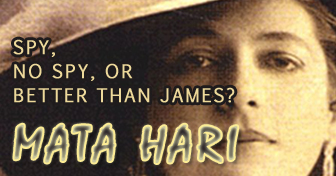
All-Time Records in
History
What was the
bloodiest battle, the battle with the least
casualties, who was the greatest military leader?
 Go to
Records in History
Go to
Records in History
|
|
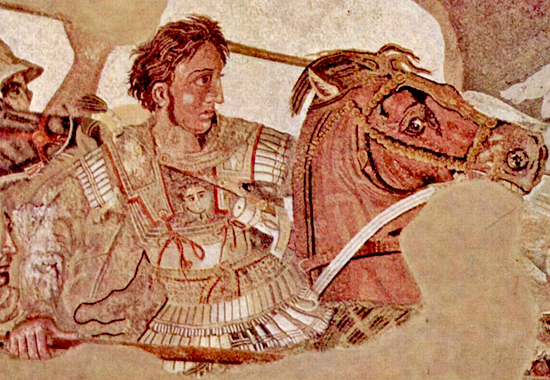
Alexander and Bucephalus in Battle
Museo
Archeologico Nazionale di Napoli
Bucephalus
Bucephalus was
 Alexander the Great's favorite
horse.
Alexander the Great's favorite
horse.
|
|
Image Above
Alexander on his horse Bucephalus
fighting in the battle of Issus against Darius III of Persia.
Detail from the huge Alexander Mosaic
floor that was originally in the House of the Faun in
Pompeii, Pompeii's largest house.
The mosaic is
317 cm or 10 ft 4 inch high
and
555 cm or 18 ft 2 inch long
and you can see it now in the
National Archaeological Museum of Naples on the wall.
The scene is most likely from the
Battle of Issus, which was fought in 333 BC. If not, it has to be
from the Battle of Gaugamela, fought in 331 BC.
Here is more on the
 Battle of Issus.
Battle of Issus.
And here is more on
 Darius III.
Darius III.
Zooming in on the mosaic . . .

|
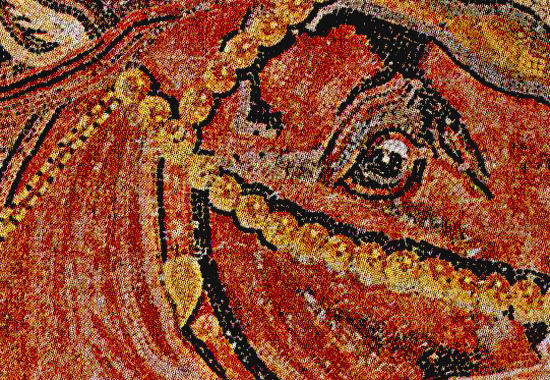
Bucephalus in Action
Museo
Archeologico Nazionale di Napoli
And zooming all the way out . . .


The Alexander Mosaic. Once the Floor
Decoration of a Financially
Comfortable Roman Family. Now at a Museum Wall in Naples.
Museo
Archeologico Nazionale di Napoli
What's With the Name?
Alexander named his horse after its
looks.
The horse's head reminded of an ox, ergo Bucephalus,
which literally means ox-head and makes sense if you
speak Greek:
βους = vous (phonetically) = ox
κεφαλη = kefáli (phonetically) = head
Who Tells Us About
Bucephalus?
|
Greek historian
 Plutarch
was born in 46 AD.
Plutarch
was born in 46 AD.
In his
Parallel Lives he wrote: |
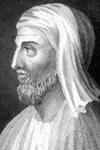 |
Philonicus the
Thessalian brought the horse Bucephalus to
Philip, offering to sell him for thirteen
talents; but when they went into the field
to try him, they found him so very vicious
and unmanageable, that he reared up when
they endeavoured to mount him, and would not
so much as endure the voice of any of
Philip's attendants.
Upon which, as
they were leading him away as wholly useless
and untractable, Alexander, who stood by,
said, "What an excellent horse do they lose
for want of address and boldness to manage
him!"
Philip at
first took no notice of what he said; but
when he heard him repeat the same thing
several times, and saw he was much vexed to
see the horse sent away, "Do you reproach,"
said he to him, "those who are older than
yourself, as if you knew more, and were
better able to manage him than they?"
"I could
manage this horse," replied he, "better than
others do." "And if you do not," said
Philip, "what will you forfeit for your
rashness?" "I will pay," answered Alexander,
"the whole price of the horse."
At this the
whole company fell a-laughing; and as soon
as the wager was settled amongst them, he
immediately ran to the horse, and taking
hold of the bridle, turned him directly
towards the sun, having, it seems, observed
that he was disturbed at and afraid of the
motion of his own shadow; then letting him
go forward a little, still keeping the reins
in his hands, and stroking him gently when
he found him begin to grow eager and fiery,
he let fall his upper garment softly, and
with one nimble leap securely mounted him,
and when he was seated, by little and little
drew in the bridle, and curbed him without
either striking or spurring him.
Presently,
when he found him free from all
rebelliousness, and only impatient for the
course, he let him go at full speed,
inciting him now with a commanding voice,
and urging him also with his heel.
Philip and his
friends looked on at first in silence and
anxiety for the result, till seeing him turn
at the end of his career, and come back
rejoicing and triumphing for what he had
performed, they all burst out into
acclamations of applause; and his father
shedding tears, it is said, for joy, kissed
him as he came down from his horse, and in
his transport said,
"O my son,
look thee out a kingdom equal to and worthy
of thyself, for Macedonia is too little for
thee."
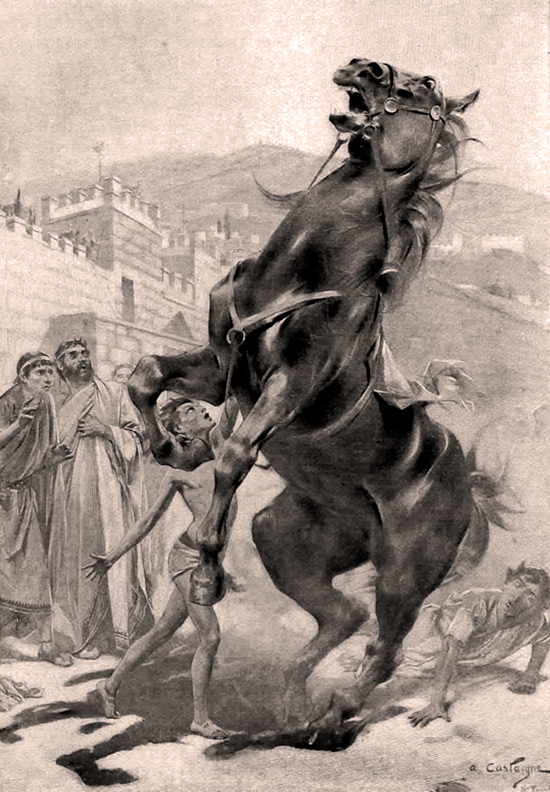
The Taming of Bucephalus
Engraving (1898-1899) by André
Castaigne (1861-1929)
Image above, heads left to right:
-
 Aristotle
(Alexander's tutor)
Aristotle
(Alexander's tutor)
-
 Philip II of Macedon
(Alexander's father)
Philip II of Macedon
(Alexander's father)
-
Alexander
-
Bucephalus
-
Philonicus the
Thessalian (barn manager and horse broker)
|
Pliny the
Elder also lived in the first century AD.
Pliny had enough to say about pretty
much anything, so he wrote his own encyclopedia and titled it
Natural History.
In Book 8, Chapter 42, he tells us:
|
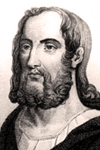 |
The same Alexander the Great, of whom
erewhile wee spake, had a very straunge and
rare horse, whom men called Bucephalus,
either for his crabbed and grim looke, or
else of the marke or brand of a buls head,
which was imprinted udpon his shoulder.
It is
reported, that Alexander being but a child,
seeing this faire horse, was in love with
him, and bought him out of the breed and
race of Philonicus the Pharsalian, and for
him paied sixteene talents. He would suffer
no man to sit him, nor come upon his backe,
but Alexander; and namely, when hee had the
kings saddle on, and was also trapped with
roiall furniture: for otherwise hee would
admit any whomsoever.
The same horse
was of a passing good and memorable service
in the warres: and namely, being wounded
upon a time at the assault of Thebes, he
would not suffer Alexander to alight from
his backe, and mount upon another. Many
other strange and wonderfull things hee did:
in regard whereof, when he was dead, the
king solemnized his funerals most
sumptuously; erected a tombe for him, and
about built it built a citie that bare his
name, Bucephalia.
|
Aulus
Gellius, who lived in the
2nd century AD,
knew about Bucephalus as well.
We
read in his Attic Nights,
book 5, chapter 2: |
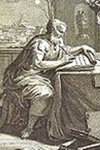 |
About the
horse of king Alexander, called Bucephalas.
The horse of king Alexander was called
Bucephalas because of the shape of his head.
Chares wrote
that he was bought for thirteen talents and
given to king Philip; that amount in Roman
money is three hundred and twelve thousand
sesterces.
It seemed a
noteworthy characteristic of this horse that
when he was armed and equipped for battle,
he would never allow himself to be mounted
by any other than the king.
It is also
related that Alexander in the war against
India, mounted upon that horse and doing
valorous deeds, had driven him, with
disregard of his own safety, too far into
the enemies' ranks. The horse had suffered
deep wounds in his neck and side from the
weapons hurled from every hand at Alexander,
but though dying and almost exhausted from
loss of blood, he yet in swiftest course
bore the king from the midst of the foe; but
when he had taken him out of range of the
weapons, the horse at once fell, and
satisfied with having saved his master
breathed his last, with indications of
relief that were almost human.
Then king
Alexander, after winning the victory in that
war, founded a city in that region and in
honour of his horse called it Bucephalon.
|
Even history buff Sir Walter Scott
weaved the name of
this famous horse into one of his novels. By then, Bucephalus
had become a synonym for impressive horse.
Here is an excerpt from the 1814 novel
Waverley: |
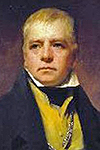 |
. . . over the chimney in the library,
beneath a picture of the knight and his
horse, where the features were almost
entirely hidden by the knight’s profusion of
curled hair, and the Bucephalus which he
bestrode concealed by the voluminous robes
of the Bath with which he was decorated.
Bucephalus — The Legend
Apparently, the
 Delphic oracle was consulted by
Alexander's father
Philip who wanted to know name and
address of his successor. The oracle announced
something to the effect that,
Delphic oracle was consulted by
Alexander's father
Philip who wanted to know name and
address of his successor. The oracle announced
something to the effect that,
He shall be king over the whole world and
shall subject all to his power, whosoever
shall leap upon the horse Bucephalus and
ride through the center of Pella.
Hence Philip's big eyes
at Alexander's aforementioned taming of the wild steed.
Bucephalus — Death & Legacy
Bucephalus was
severely wounded during a brave performance in
the
 Battle of the Hydaspes
in 326 BC, and died shortly after that battle. Battle of the Hydaspes
in 326 BC, and died shortly after that battle.
Alexander named a city
after his horse, Alexandria Bucephalus,
which is located somewhere in today's Pakistan.
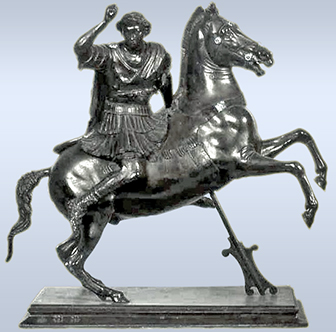
Bronze Statue of Alexander on Bucephalus
Museo Archeologico Nazionale di Napoli
This statue is 49 cm or 19 inch high and 47 cm
or 18 inch long. It was found near the theater in Ercolano, Italy, on October 22, 1761.
Ercolano, by the way, used to be Herculaneum
until
 Vesuvius
erupted in AD 79. Vesuvius
erupted in AD 79.
And who died of the toxic fumes that erupted from
Vesuvius that year?
That's right, Pliny the Elder, the one who had
written about Bucephalus, and the very one whose quote above you
might or might not have read.
Here is more about
 Alexander the Great.
Alexander the Great.
And here is
 Bucephalus at Fontainebleau.
Bucephalus at Fontainebleau.
More History
|